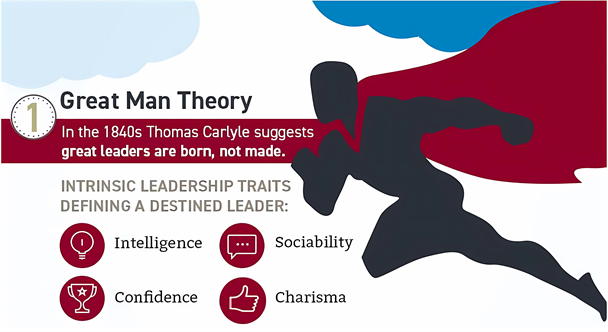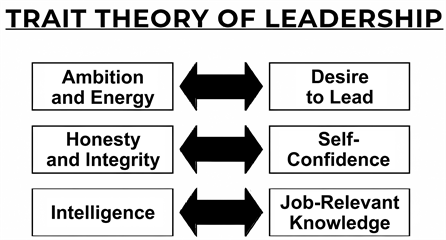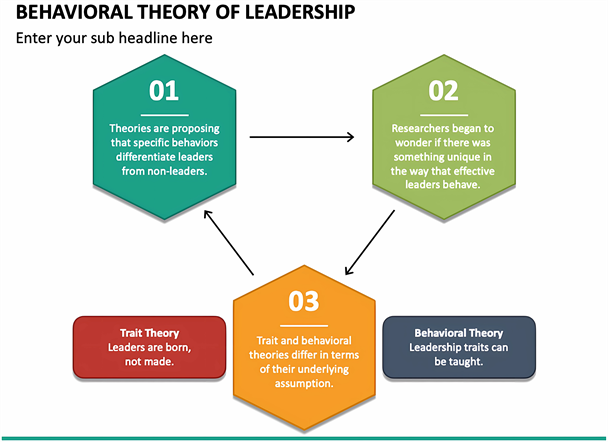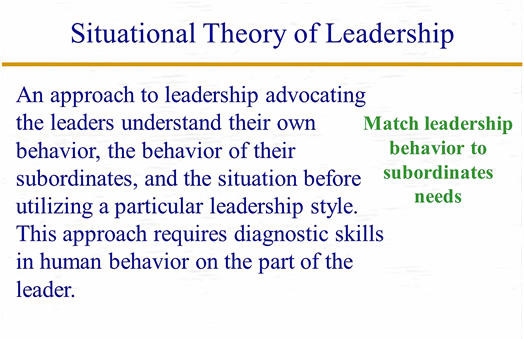1. Introduction
Various professional and social groups have faced severe challenges from the dawn of humanity. The individuals involved had to consolidate their efforts and demonstrate sufficient expertise, knowledge, and resilience to address pressing issues. However, the optimal problem-solving manner requires efficiently allocating the resources above. Extended groups may need help to optimize their approach and direct the efforts of all participants in the necessary direction. Effective leadership has always been paramount in virtually all spheres of human activities. Leaders are indispensable as they pursue several critical objectives in inspiring their followers, selecting the optimal strategies, and utilizing the available assets. Nevertheless, leadership has remained a multifaceted notion due to the complexity of social and professional landscapes (see Appendix A).
In short, a broad array of situations exist, and each context demands a particular approach to management. For example, in times past, great warriors led entire armies to victory, whereas in recent times, they were replaced by those who could think strategically. Next, the business environment has dictated different management approaches across eras. At first, the corporate sphere emphasized the effective distribution of resources and maximizing the operational profits of an organization. As the institutes of social thought developed, the focus gradually shifted toward more person-centered models of leadership, which consisted of creating a favorable atmosphere for nurturing human resources.
At the same time, emergency management is a unique sphere with unparalleled tasks and objectives, requiring an equally bespoke approach to leadership. The professional field per se is centered around crises that human civilization and specific communities may endure. Thus, the situation is at the core of emergency management, placing additional requirements on the professionals engaged in it and leaders. The array of possible disasters, which form the area of professional emergency management expertise, has increased exponentially over the recent years, along with the development of technology and the emergence of new threats. As constructions and mechanisms become complex, the frequency of human-made disasters increases accordingly, while domestic and international terrorism become an issue of growing concern for the international community (Misra et al., 2020) . Therefore, emergency management remains in continuous development, and leaders are to be in the vanguard of this evolution.
Simultaneously, effective leadership in emergency management is required to reflect the nature of disaster response. A crisis can develop rapidly as the context of each particular scenario remains subject to quick changes. The situation may take a completely different turn at any moment, meaning that the response team is to be prepared for it and readjust its operations equally rapidly. Leaders should retain this degree of versatility and adaptability, as their purpose in emergency management is to coordinate the collective efforts of vast interprofessional units. Ultimately, it appears attractive to review whether the dominant theories of leadership, which are widely discussed and accepted in other settings, can be applied in such a particular scenario as emergency management. This paper relies on the synthesized review of recent academic findings on the topic above to outline the critical aspects of prominent leadership models in their contemporary understanding.
2. Review of Literature
2.1. Grand Man Theory of Leadership
The theoretical understanding of leadership has undergone significant changes and the evolution of social and corporate thought. The so-called “Great Man” Theory (GMT) is one of the prominent views of management in the past, reflecting humanity’s innate pursuit of strong personalities who are naturally capable of inspiring others and leading them through the hardships of life. Khan et al. (2016) review the GMT in the historical context as one of the first fully established leadership theories. In short, certain people are naturally born with qualities that make them destined to become strong leaders (see Appendix B).
The article also objectively reviews GMT while correctly outlining its flaws. In this way, the model in question became humanity’s first science-based attempt at providing a theoretical framework that would describe leadership as the cornerstone of social and professional activities. The evolution of scientific and social thought urged experts to reconsider the postulates of the GMT, as the natural predisposition to leadership appears questionable within the current understanding of the term. Destiny is a vague concept, and its applicability to such vital, practice-oriented activities as emergency leadership is doubtful.
2.2. Trait Theory of Leadership
Nevertheless, the basic concept, which served as the foundation of the Great Man Theory, was not disregarded completely. Instead, the postulates underwent a significant degree of reconsideration within the paradigm of theoretical findings. Consequently, the top leadership theory, the GMT observed the evolution and emulated the trait leadership model (Wyatt & Silvester, 2018) . The latter is based on the core idea of the former, according to which an individual is born with a particular set of characteristics that contribute to their leadership potential. When spoken differently, a person is never destined to be a natural leader but may possess certain traits becoming enablers or impediments.
Accordingly, the Trait Theory retains the ascribing nature of its predecessor while refraining from the strict predetermination-based rhetoric. Even though the applicability of such a model in the current environment appears highly questionable, Wyatt & Silvester (2018) argue that the Trait Theory retains its importance in specific spheres. Moreover, while innate characteristics may have a limited influence on actual leadership performance, they affect an individual’s perception by the public. Such an effect is instrumental in politics, where voters determine the outcome based on their respective views of the circumstances and must possess complete knowledge of a candidate’s capability and qualities. Therefore, the article by Wyatt & Silvester (2018) is essential for understanding the idea behind the Trait Theory in the 21st century. Interestingly, while the authors acknowledge the obsolete dogmas upon which the model is based, they provide a viable form in which the Trait Theory persists in the contemporary environment.
2.3. Primal (Emotional) Theory of Leadership
As society continued its development in both the 20th-21st Centuries, the sectors of human activities rapidly expanded in terms of scale and scope. As a result, the global professional environment has seen a significant increase in the amount and quality of leadership models, encompassing various aspects of complex human relations. The elementary leadership theory applies the dogmas of emotional intelligence in a professional environment, addressing and evoking positive feelings among followers. It focuses on the emotional aspect of professional activity as an effective source of internal motivation. Kang & Oh (2017) provide a comprehensive review of primal leadership, outlining its positive effects on the workplace environment. Their findings suggest that the model promotes job satisfaction and commitment, enabling better team performance.
These aspects can be related to emergency management, as the commitment of response unit members is integral to mitigating crises and saving residents’ lives. The elementary leadership theory differs from the earlier concepts described above in that it is centered around the follower rather than the leader. Ultimately, the positive effect is conditioned by the perception of the former and not the innate qualities of the latter.
2.4. Normative (Ethical) Theory of Leadership
The key concepts behind the elementary leadership theory demonstrate a solid link to the next model, which will be discussed within the framework of the present review. However, while the previous approach dwelled on the emotional side of management, the normative leadership theory is usually reviewed in the context of the team’s behavioral patterns. Similarly, this model dictates how the leader is expected to act to cause a positive response and yield better results. Peng & Kim (2020) discussed that normative or ethical leadership attains its objective through distinct mediating pathways. First, it comprises the exchange between the leader and their interpretation of the ethical culture within an organization. The management process concentrates on moral principles, which should be transmitted to the followers through the leader’s example as the ultimate role model (see Appendix D).
Moreover, all decisions are expected to follow the above pathways to create an ethical environment where the organization can thrive. Overall, this approach to management appears rather broad and generalized, as ethical principles are widely recognized today as essential to the development of communities. They are naturally expected to be thoroughly followed within all professional and social contexts, meaning that normative leadership can be considered an integral component of leadership rather than a distinct model.
2.5. Behavioral Theory of Leadership
The behavioral theory of leadership is related to the previously discussed concept in that it focuses on the acting patterns of a manager. Oberer & Erkollar (2018) utilized behavioral leadership postulates as the theoretical core of their research. The article focuses on effective leadership techniques in the new age of the fourth industrial revolution, whereby the particularities of the current period are vast. They encompass all spheres of human activity due to the universal implementation of modern technology. Therefore, the critical mechanism of behavioral leadership relies on the observations of other prominent leaders’ approaches, which have proven their effectiveness. Another vital component consists of the objective evaluation of the styles mentioned earlier and their adaptation to the challenges a manager faces. Accordingly, this model requires a considerable degree of critical thinking exercised by the leader, as the behavioral experience of others is not to be followed blindly. Nevertheless, it can be applied in the emergency management context. If the approach is executed thoroughly, it has immense potential to promote effective decision-making and attain organizational goals.
2.6. Contingency (Situational) Theory of Leadership
In contrast, the contemporary landscape is highly changeable, and this tendency is observed across industries. Furthermore, in the case of emergency management, changeability has become an integral characteristic of the operational environment, which poses additional requirements in terms of effective management paradigms (see Appendix F). The Contingency Theory of Leadership (CTL) acknowledges this phenomenon and proposes a potentially effective framework to address it. According to the CTL, it is impossible to distinguish a particular approach to management which would become equally applicable in all situations, even within one specific setting (Thompson & Glasø, 2018) . On the contrary, a competent leader should demonstrate considerable adaptability, remaining prepared to adjust their tactical and strategical decision-making per the changeable environment. Thompson & Glasø (2018) reviewed the CTL in its contemporary understanding and concluded that the model attains its full potential on the condition that the leader’s assessment skills are on par. Furthermore, the manager’s team rating should correspond to the unit’s self-assessment for effectively utilizing the CTL.
Hence, leaders should be correct in estimating their followers’ capability. The CTL appears instrumental in emergency management because it focuses on flexibility and adaptation. Crises often unfold within minutes, and the details of an occurrence can change even more quickly. Therefore, emergency management leaders should adapt to new developments. However, as the CTL dictates, they must also obtain a realistic, evidence-based understanding of the response team’s ability to complete specific tasks.
2.7. Chaos Theory of Leadership
Complexity has become the defining characteristic of the modern environment, in which globalization, technological progress, and political indeterminacy entail complicated situations across different settings. Under these circumstances, the notion of chaos is attributed to a special meaning, as the current situation evokes associations with it. Chaos is the lack of order, and many opinions point toward the impossibility of exercising any degree of control over it. Nevertheless, the interdisciplinary chaos theory introduces a different perspective. Discerning specific underlying patterns and interconnection is feasible even within the most complicated and seemingly disordered systems (see Appendix G). This philosophy is often applied to leadership, as it states that the perceived chaotic nature of a context should disconcert a capable manager. On the contrary, true mastery consists of the ability to distinguish patterns and devise control over them. The field of emergency management is not an exception, as it is generally characterized by extreme unpredictability.
The application of chaos theory in management has been an area of intense interest for researchers across the globe. As such, Watkins et al. (2017) reviewed the modern challenges the institutions responsible for educating contemporary leaders face. The authors draw similarities between the chaos theory and the highly changeable environment of the 21st century, stating that modern leaders are to “sense environmental cues, adapt to rapidly changing contexts, and thrive in uncertainty” (para. 1). On the other hand, even small yet inconsiderate leadership actions can cause a lasting impact, reminiscent of the butterfly effect. The proponents of the chaos theory of leadership promote the adaptability and flexibility of managers, who should adjust to emerging challenges. This model can be reviewed within a broader context in its undeniable relation to the contingency theory of leadership, demonstrating a high degree of applicability in emergency management.
2.8. Authoritative Theory of Leadership
As established in the prior sections, the contemporary academic environment possesses considerable research, reflecting the vast array of leadership theories. These models may vary based on several key parameters, consisting of the degree of the manager’s involvement. For example, some leaders prefer to nurture the autonomy of their workers and allow them to select optimal solutions individually, without supplementary supervision, thus adhering to the Laissez-Faire philosophy (Kanwal et al., 2019) . On the other hand, some managers seek to exercise complete control over the procedures, resorting to the authoritative model. In this case, the leader remains hands-on, controlling as many tasks as possible.
At the same time, this methodology establishes a stronger image of the manager as the figure in charge of the operations. The study by Kanwal et al. (2019) has revealed that authoritative and laissez-faire models contribute to developing workplace ostracism in most situations. However, it is possible to theorize that the former approach can be more effective in emergency management. As discussed, this sphere is highly particular in its distinct characteristics, and the severity of a crisis may demand an authoritative stance taken by the leader.
2.9. Transactional Theory of Leadership
Undoubtedly, two dominant theories exist, established to reflect the current circumstances under which organizational leadership is exercised. The first model, titled the transactional theory of leadership, concentrates on the role of supervision, performance, and internal organization. Furthermore, transactional leaders emphasize specific objectives, providing additional incentives through punishments and rewards (Martínez-Córcoles & Stephanou, 2017) . Therefore, clear motivation is at the core of transactional leadership, which also requires concise and transparent directives provided by the management. Ma & Jiang (2018) offer an in-depth analysis of this model in the contemporary environment. The article explores the concept at length, providing a credible conclusion that underlines transactional leadership’s positive influence on follower creativity. Nevertheless, while creative thinking is an increasingly important concept in the 21st century, its value may not be as significant in emergency management, where units are to follow strict standards and protocols.
Creativity and improvisation in a stressful environment of an unfolding crisis may result in the poor execution of a leader’s commands, thus entailing a loss of control over an inherently challenging situation. Martínez-Córcoles & Stephanou (2017) ’s study investigates the model’s effectiveness in the military context, partially related to emergency response unit operations. The article does not entirely refute the transactional approach, but its findings limit the effect of the theory’s implementation to a particular aspect. More specifically, transactional leadership positively impacted safety performance in military operations. However, while this aspect is essential in emergency management, the remaining limitations do not consider transactional leadership an inherently suitable model.
2.10. Transformational Theory of Leadership
Subsequently, transformational leadership has become another dominant paradigm in the contemporary environment. Its core objective intersects with the purpose of the transactional model in that it seeks to foster commitment and encourage followers. However, how the goal is attained is different in this scenario. The transformational theory is pointed at a broader perspective and does not comprise micromanagement. Unlike transactional leaders, transformational ones do not concentrate on immediate tasks (Delegach et al., 2017) . Instead, their vision extends to an organization’s global objectives, aiming to transform its image and the entire industry, hence the model’s name (see Appendix I). The analysis by Delegach et al. (2017) has shown that, similarly to transactional leadership, the transformational model positively affects the team’s commitment and safety performance, making it a viable human resource instrument. Ma & Yang (2020) concur with the proponents of this approach. According to them, transformational leaders are inspiring and charismatic, which inevitably reflects positively on their performance.
The characteristics above make transformational leadership a good management style in emergency response. Research suggests that it has proven effective in one of the most significant healthcare emergencies in recent history, the Covid-19 pandemic (Ma & Yang, 2020) . However, it is necessary to outline some limitations conditioned by the complexity of the emergency management field. Transformational leadership appears particularly effective in higher echelons of emergency management, i.e., policy-makers level. Leaders of the entire sphere can utilize the benefits of the transformational model to render emergency management safer and more efficient, redefining its image as a profession. At the same time, the need for more micromanagement may be detrimental to the scale of a single response team working at the site of a specific disaster.
3. Discussion
Overall, the review of existing literature suggests that the variety of leadership theories is comprehensive, and the array continues to expand presently. As inferred from the analysis, it is impossible to discern a single model which can be universally and unanimously applied in emergency management. Accordingly, a multi-level hierarchy of leadership styles will be the most effective approach. On the global policy-making level, the postulates of transformational leadership can be instrumental in promoting the development of the sphere.
Charismatic leaders with a clear vision will optimize the allocation of resources and select suitable strategies for the profession’s development. Next, on the level of specific challenges enabled by particular emergencies, the contingent approach will ensure the team’s adaptability under rapidly unfolding circumstances. Indeed, it will be possible to incorporate some elements of transactional leadership into emergency management. However, the primary incentive of all response team members should be independent of the leader’s style. After all, saving lives and mitigating the consequences of a dangerous crisis will be the ultimate reward for all response units.
4. Conclusion
The selection of a leadership style accounts for a considerable portion of the general organizational performance. This theoretical and empirical research area has evolved over the past decades, which has changed the direction of leadership theories. Previously, the academic community popularized the ideas of innate leadership in either hard or soft forms. However, as scientific and philosophical thought developed, so did the views on management. As a result, the concept of natural leadership selections has become invalid, as additional emphasis has been laid on acquired characteristics.
Furthermore, the contemporary paradigms of management increasingly focus on ethics and inclusion. The leading models of the 21st century promote commitment and trust through positive motivation and integrity. Nevertheless, emergency management should rely on more than one leadership strategy, as the complexity of the area requires a multilateral approach. Further research can focus on specific scenarios in which the effectiveness of particular leadership theories will be assessed.
Acknowledgements
I want to express my special appreciation to my committee member and chair, Dr. Ian A. McAndrew, FRAeS, Dean, Doctoral Programs and Engineering Faculty. I am grateful for Dr. McAndrew’s timeless support in encouraging my research and writing to continue developing as a scientist and pursuing a second doctorate. In addition, his advice on research and academia has been priceless. I would also like to thank Carmit Levin for her enduring support—furthermore, a special thanks to my cousin, Ms. Maria Boston, whose academic inputs were invaluable.
Appendix
Appendix A: Theories of Leadership and Emergency Management

Note. Adapted from Caro (2016) . Towards transformational leadership: the nexus of emergency management systems in Canada. International Journal of Emergency Management, 12(2), 113. https://doi.org/10.1504/ijem.2016.076631
Appendix B: Great Man Theory

Note. Adapted from Gorkes (2021, January 26) . “Great Man” Theories. Sites.psu.edu; The Pennsylvania State University. https://sites.psu.edu/leadership/2021/01/26/great-man-theories/
Appendix C: Trait Theory of Leadership

Note. Adapted from Mahmud (2022, March 5) . Trait Theory of Leadership. Urquery.com; UR Query. https://urquery.com/educations/trait-theory-of-leadership
Appendix D: Ethical Theory of Leadership

Note. Adapted from Mintz (2021, August 25) . The Role of Ethical Leadership in Organizational Culture. Workplace Ethics Advice; Workplace Ethics Advice. https://www.workplaceethicsadvice.com/2021/08/the-role-of-ethical-leadership-in-organizational-culture.html
Appendix E: Behavioral Theory of Leadership

Note. Adapted from Behavioral Theory of Leadership (2023). PowerPoint Templates, Graphics and Themes, PPT Slides | SketchBubble. https://www.sketchbubble.com/en/presentation-behavioral-theory-of-leadership.html
Appendix F: Situational Leadership Theory

Note. Adapted from Garvis, K. (2017, June 29). Situational Theory of Leadership. SlidePlayer, Upload and Share your PowerPoint presentations. https://slideplayer.com/slide/3336529/